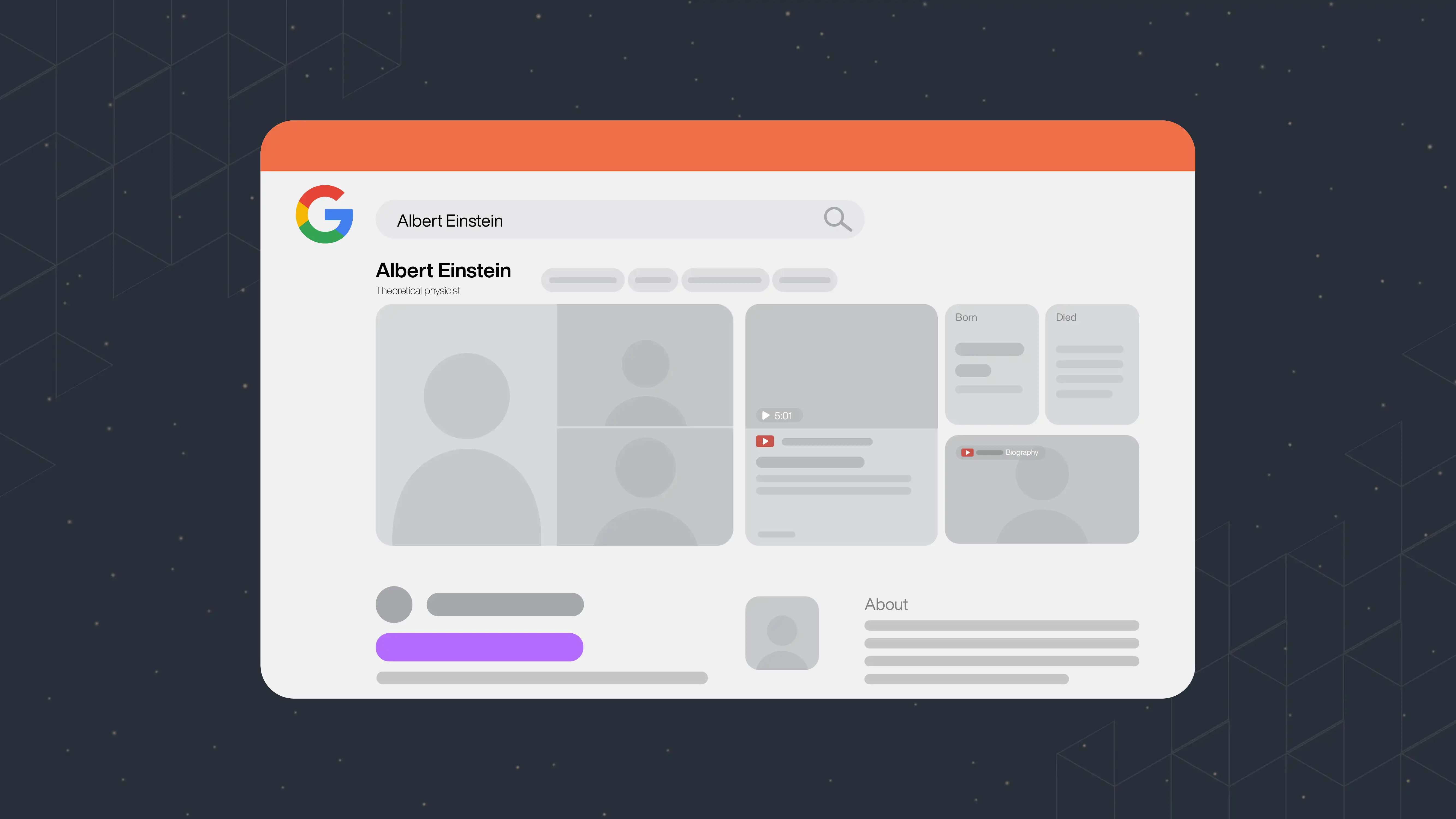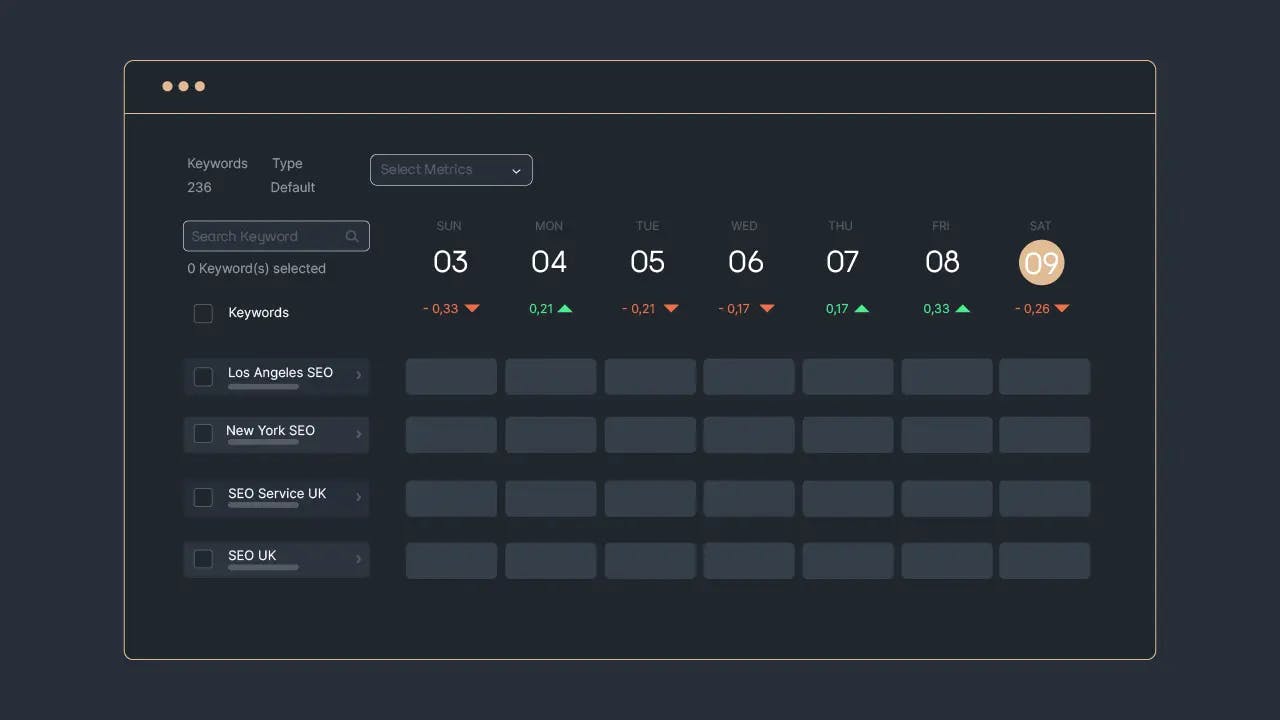Imagine a scenario where your website not only appears in search results but also provides instant, comprehensive information about your brand, services, or products directly on the search engine results page.
This is the power of Google Knowledge Graph, a knowledge base that empowers search engines to understand entities and their relationships. In this article, we will learn all about knowledge graph starting from the definition, how it works, and how to optimize your site for it.
What Is A Google Knowledge Graph?
Google Knowledge Graph is a powerful knowledge base integrated into Google Search, designed to enhance the search experience by providing more meaningful and contextually relevant information directly within search results.
This sophisticated feature, introduced by Google in 2012, represents a significant advancement in search technology. Google officially introduced the Knowledge Graph on May 16, 2012, with the goal of making search results more intuitive and informative.
This marked a departure from traditional search results, which primarily comprised a list of links. The Knowledge Graph represents a shift from a keyword-centric approach to a more semantic understanding of user intent. It enables Google to interpret the context of a search query and deliver more accurate information.
One of the most visible aspects of the Knowledge Graph is the information panes that appear on the right side of search results. These panes provide a snapshot of key information about the searched entity, sourced from various reputable databases and websites.

Picture 1: Example of Knowledge Graph on Google SERP.
How Does A Google Knowledge Graph Work?
Google Knowledge Panel/Graph operates as a complex system that combines advanced algorithms, structured data, and machine learning to understand the relationships between entities and provide rich information.
Here's a simplified explanation of how the Knowledge Graph works:
1. Entity Recognition
The process begins with Google's algorithms identifying entities within the search query. Entities can be people, places, things, or abstract concepts. For example, in the query "Albert Einstein," the entity is the person "Albert Einstein."
2. Relationship Mapping
Google's algorithms then map relationships between the identified entity and other related entities. This involves understanding connections such as family relationships, professional affiliations, or geographical associations. In the case of "Albert Einstein," the Knowledge Graph might establish connections to his theories, family members, and historical events.
3. Data Sources and Integration
Google pulls information from various reliable sources to populate the Knowledge Graph. These sources include reputable websites, databases, and structured data provided by webmasters.
4. Structured Data and Schema Markup
Webmasters play a crucial role in contributing to the Knowledge Graph by implementing structured data and schema markup on their websites. Structured data provides explicit information about the content, helping Google understand the context and relationships between different pieces of information.
5. Information Panes
When a user submits a query related to an entity in the Knowledge Graph, Google displays an information pane on the search results page. This pane, often located on the right side of the page, provides a snapshot of key information about the entity.
Benefits of Inclusion in Knowledge Graph
Google Knowledge Graph offers several benefits for SEO strategies, empowering websites to enhance their visibility, authority, and user engagement. Here are key advantages that businesses can enjoy:
Enhanced Visibility in Search Results: Websites featured in the Knowledge Graph often appear in a prominent position on the search results page.
Authority Recognition: Inclusion in the Google Knowledge Graph is a form of recognition by Google, signifying that the information provided by a website is considered reliable and authoritative.
Improved CTR: Users are more likely to click on search results that provide immediate, relevant information. The information panes in the Google Knowledge Graph offer a concise overview, enticing users to click through to the website for more detailed content.
Optimized User Experience: The Knowledge Graph contributes to a better user experience by delivering quick and accurate answers to users' queries directly on the SERP.
Semantic Search Optimization: The Knowledge Graph aligns with Google's shift towards semantic search, which focuses on understanding the meaning and intent behind user queries.
How to Optimize A Website for Google Knowledge Graph
Optimizing a website for Google Knowledge Graph involves several key steps, including the implementation of structured data, providing accurate and relevant information, and ensuring a strong online presence. Here's a comprehensive guide on how to optimize your website for the Knowledge Graph:
1. Implement Structured Data
Utilize structured data markup (such as JSON-LD, RDFa, or Microdata) to provide explicit information about your content. Google uses structured data to understand the context and relationships between different entities on your website.
2. Use Schema Markup
Leverage schema.org markup to provide detailed information about specific entities on your website. Include relevant properties such as name, description, image, and other attributes depending on the type of entity (e.g., Person, Organization, Article).
3. Ensure Data Consistency
Maintain consistency in the information you provide across various online platforms. This includes social media profiles, business directories, and other online listings. Consistent data reinforces the accuracy and reliability of your entity information.
4. Utilize Knowledge Panel Editor (For Public Figures)
If you are a public figure, you can use the Knowledge Panel Editor to suggest changes or provide additional information about yourself. This feature is available for individuals with Knowledge Panels.
5. Get Links from Reputable Sites
Acquire high-quality backlinks from reputable and authoritative websites in your industry or niche. Google values links from trusted sources, and these links can contribute to your website's overall authority and credibility. A strong backlink profile can positively influence your chances of being featured in the Knowledge Graph.
6. Monitor Your Page
Once you have implemented all the above steps, you need to monitor your page and keywords. It is done to make sure that your page performance is good enough and see whether you are successful in being featured in the Google knowledge graph.
In this case, you can use Sequence Stats as your SEO tool and keyword monitoring assistant. All you need to do is track your keywords and see their daily ranking. This tool also provides various keyword metrics, including the SERP features earned by the keyword.

Picture 2 - Rank Tracker in Sequence Stats
Picture 3 - SERP features of the keywords.
Conclusion
Optimizing for Google Knowledge Graph is an ongoing process that requires attention to detail and a commitment to providing accurate, relevant, and up-to-date information. By following these steps, including acquiring reputable backlinks, you can increase the likelihood of your website being featured in the Knowledge Graph, enhancing your online presence and authority.
In addition, use Sequence Stats to assist you in doing keyword monitoring and get valuable data about your website. Register now and enjoy the free trial!